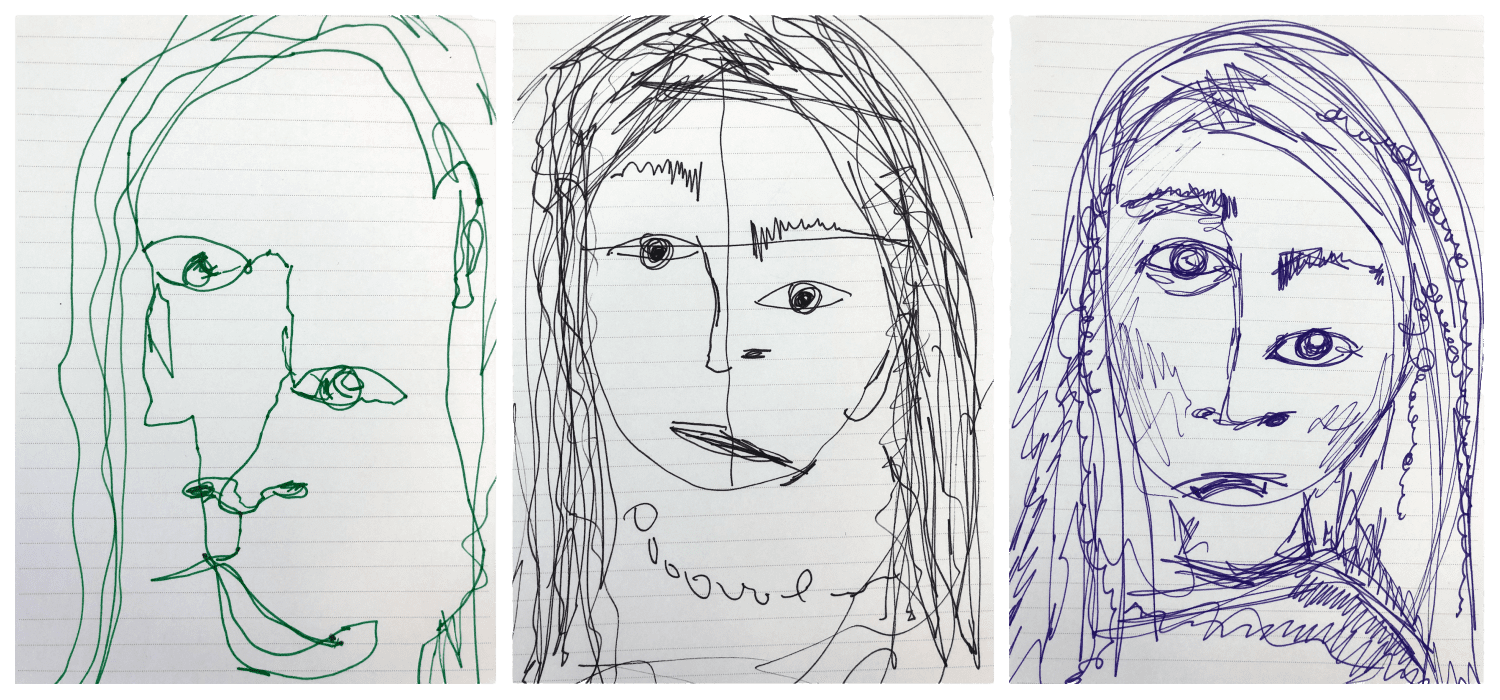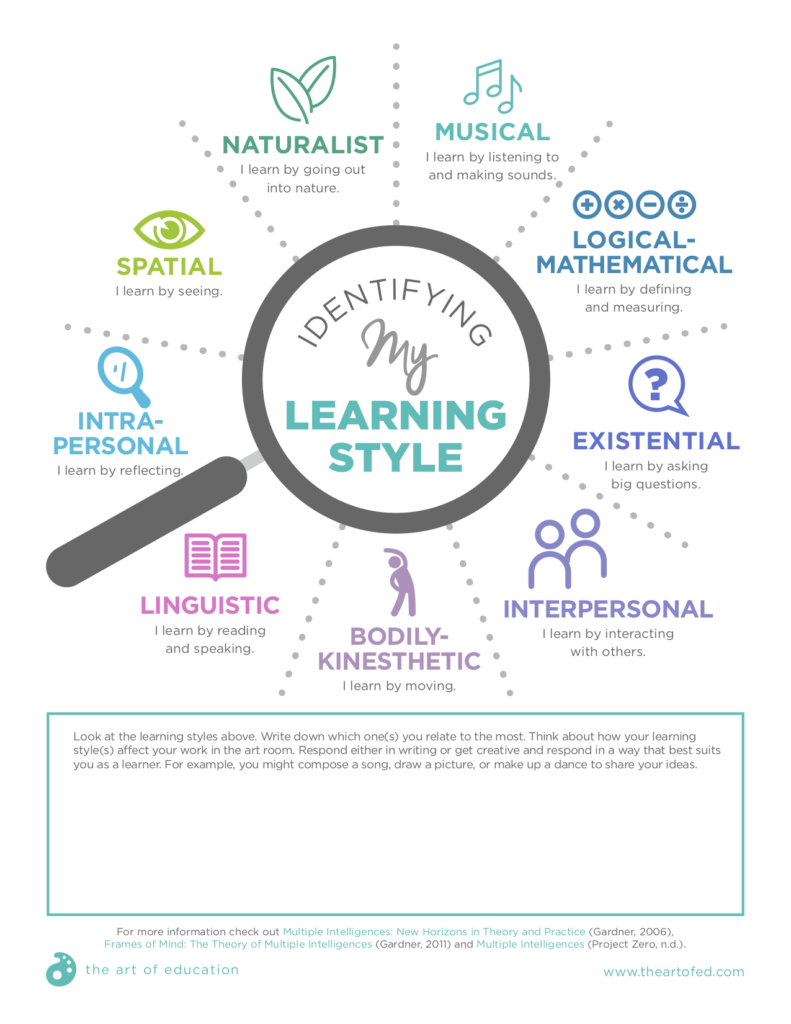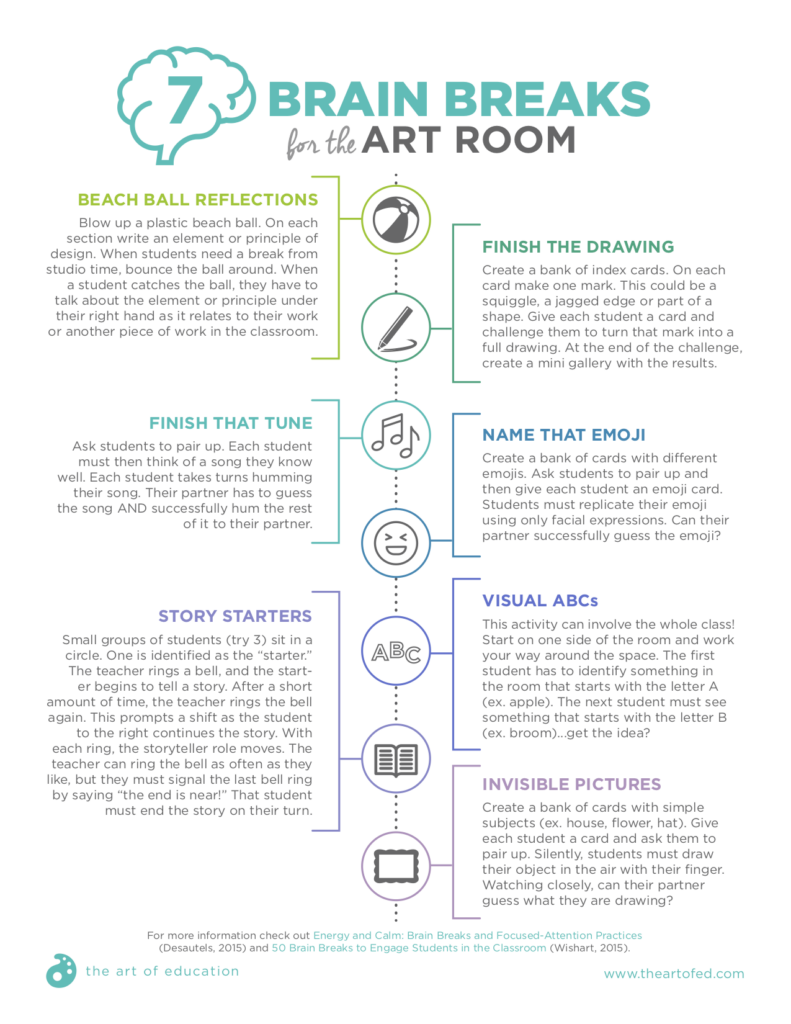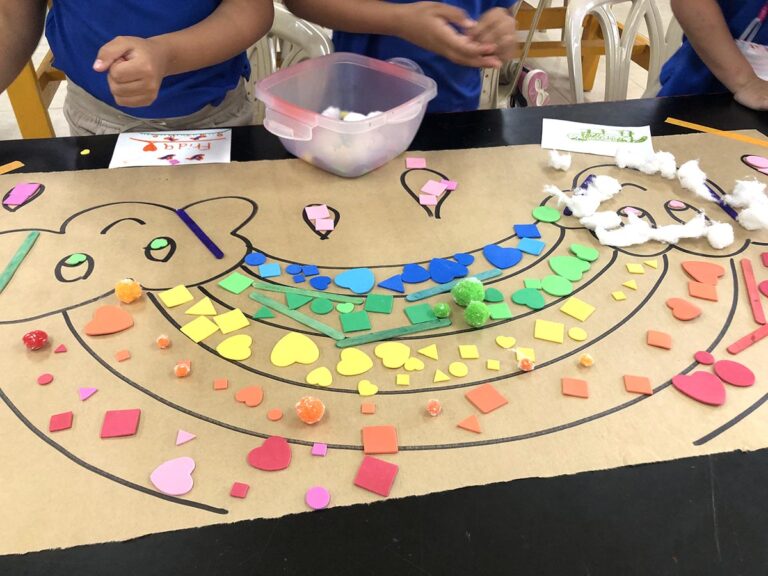If you’re an art teacher, you’ve probably been told your brain works differently than others’. After an ordeal I went through a few years ago, I’m here to tell you that is absolutely true. You see, I suffered a sudden stroke at the age of 32. Although the road to recovery was difficult, I credit my amazing art teacher brain for helping me successfully find my way back to a new normal.
Throughout my ordeal, I couldn’t help but notice the connections to learning in the classroom.
It turns out, having a stroke served to make me a stronger, more empathetic instructor, and arguably, a less restrictive artist.
The Event
I was living and thriving in Zurich, Switzerland. Elementary and middle school art teacher by day, university professor by night, I had found my element.
I came home from a typical day and sat down to a video chat with a friend in the states. We spent the evening catching up until I started to feel a bit strange. Soon, I realized I was gripping the table in front of me in an effort to keep myself aligned with the screen. I excused myself and immediately went to the floor, the right side of my body having been rendered completely useless.
Fast forward to me finding myself in a stroke recovery ward. Apparently, a tiny tear occurred in one of my blood vessels which caused a clot, blocking an artery in my brain. I’m so thankful for the specialist who was able to diagnose me. As far as most of the doctors who saw me were concerned, I was a young, healthy woman who had come in slightly confused with signs of a migraine. But this was something much more serious. Cue brain selfie below!
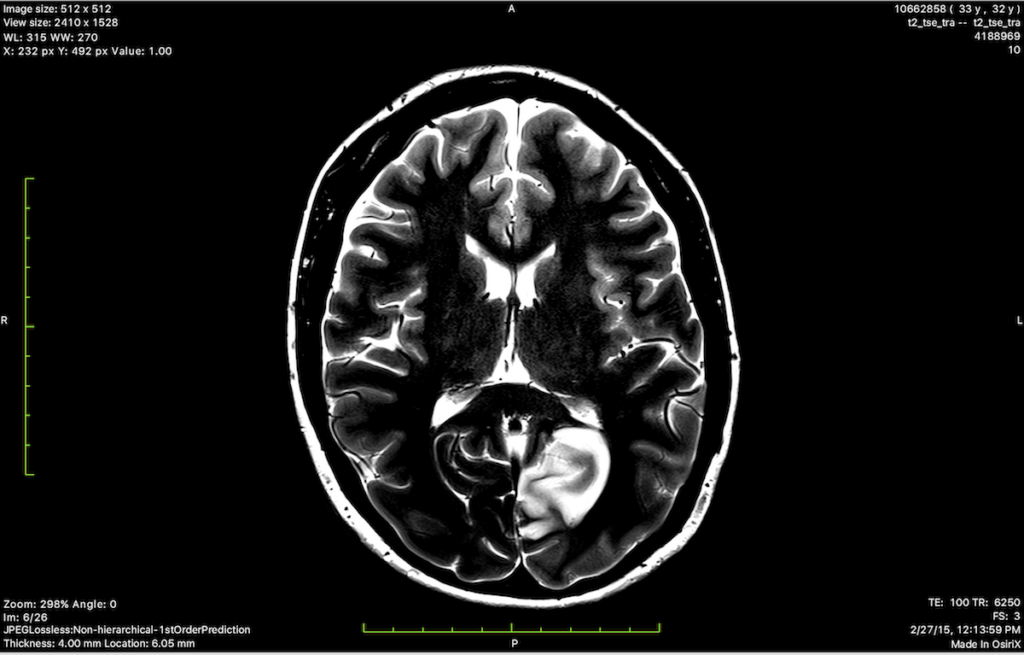
As you look at the picture above, do so as if sitting before a formal critique. Notice the composition, the light areas and how they contrast with the surrounding darkness. Look at the sense of balance, is anything off? See the area lighter than the rest of the brain? That, right there, is a stroke.
Stroke Signs Everyone Should Know
What I suffered was an Ischemic episode, the most common type of stroke. This sort of trauma is not reserved to a certain demographic and can happen to anyone, at any time.
Should you experience a stroke, or notice someone acting strangely, remember “FAST.”
- F – Face: Ask the person to smile. Does one side of the face droop?
- A – Arms: Ask the person to raise both arms. Does one arm drift downward?
- S – Speech: Ask the person to repeat a simple phrase. Is their speech slurred or strange?
- T – Time: If you observe any of these signs, call 9-1-1 immediately.
The Road to Recovery
After my initial stay in the hospital, I returned home, and the real work began. The next few months were fascinating and challenging. They were fascinating from the perspective that I was truly back in the seat of a learner, retraining my brain. It was challenging because I was both patient and teacher in this instance. “Teacher Sarah” was helping “patient Sarah” get back up to speed.
During my rehabilitation, creative release served as important medicine. I started drawing a lot of self-portraits. While the unknowing onlooker might see inspirations of Picasso, such renderings reflected what I literally saw in the mirror during this period.
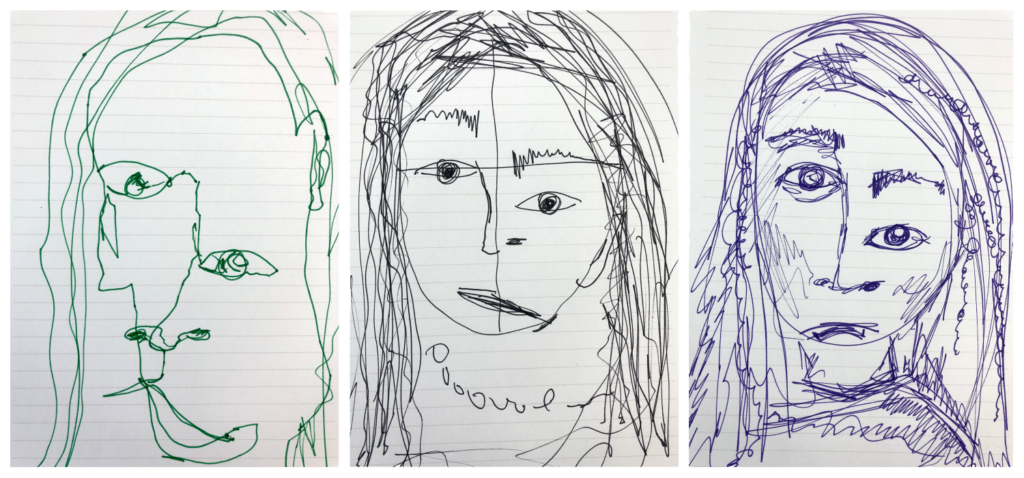
Another surprising tool for me during rehabilitation was the coloring book. Pre-stoke-Sarah would have cringed at the thought of this. Once looked upon as restrictive, I saw new value as I practiced my hand-eye coordination, while also using creative tools. Combine this with a coloring book designed for neurologists, and I began learning more about the details surrounding my event.
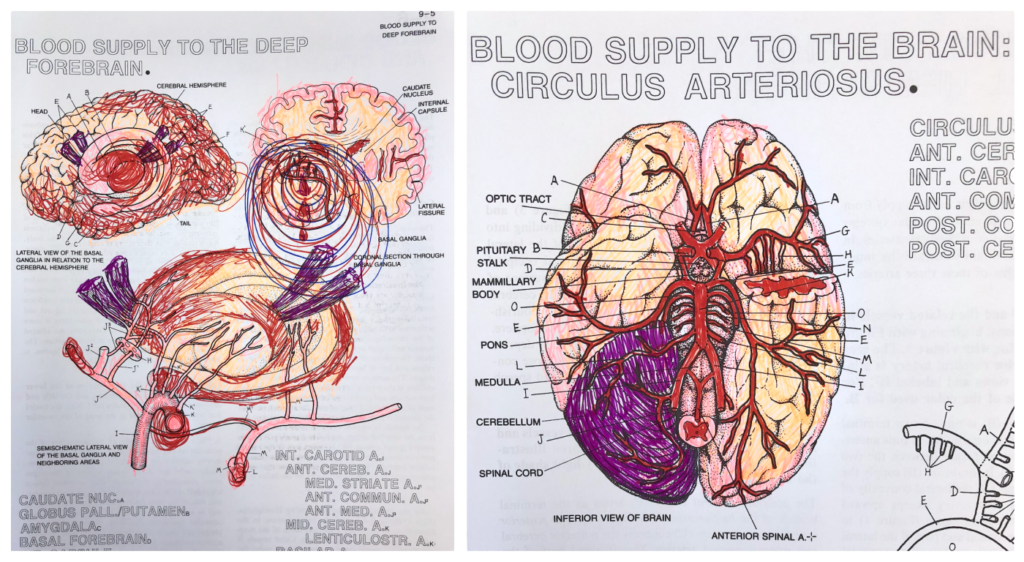
3 Takeaways for the Classroom
During my rehabilitation, which was a combination of artmaking, coloring, and neurology visits, I thought about my role as a learner, my students as learners, and my preconceived notions concerning the learning process at large. It forced me to pause and consider how we cater learning opportunities to our students as they pave passageways, strengthen receptors, and field responses in their own creative brains.
Paving Passageways: Help Your Students Find How They Learn Best
Perhaps the biggest difference in my instruction post-stroke has been a greater focus on helping students understand the ways they learn best and how that can evolve over time. I experienced my own learning transformation as I re-learned daily practices after the event. I felt humbled and also empowered as I discovered learning and organizational strategies which worked for Sarah Version 2.0. It is equally important for students today to know there is not just one version of themselves who will learn the same way for the rest of their lives. Talking about this with students is empowering.
Take a look at the following handout which illustrates different learning styles. This handout has been created so you and your students can identify their best ways of learning. A completed version of this handout would be a great addition to any sketchbook, serving as a visual aid for students as they describe their learning styles to those around them.
Strengthening Receptors: Help Your Students Set Goals
In addition to helping students understand their learning styles, it is important to guide them in setting manageable and meaningful goals for growth. During my recovery, I set a goal to improve hand-eye coordination as I continued to draw self-portraits and color. Student goals may involve similar skills, perhaps as they navigate media for the first time, or as they work to master a particular technique or approach. (You can find a helpful download to lead students through setting their own goals here.)
Fielding Responses: Help Your Students Reflect
A third takeaway from my story is the importance of reflection. Learning is a serious and strenuous task. If our brain tells us to keep working, keep experimenting, keep producing, that is what we must do. But sometimes our brains will show signs of fatigue, and when that happens, we must give it time to rest and recharge.
During my recovery, creative brain breaks were really important, and I have found these activities beneficial in the K-12 classroom. Consider employing some of the exercises in the download below with your own students.
Following this personal journey, I have realized just how elastic and resilient the human brain is. However, it shouldn’t take personal trauma to see the value of slowing down, understanding how we learn, and setting manageable goals. Valuable reflective exercises, in combination with meaningful brain breaks, can help you and your students harness your incredible, elastic and resilient brains!
Magazine articles and podcasts are opinions of professional education contributors and do not necessarily represent the position of the Art of Education University (AOEU) or its academic offerings. Contributors use terms in the way they are most often talked about in the scope of their educational experiences.
